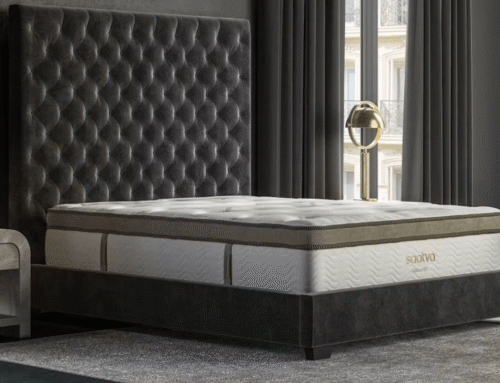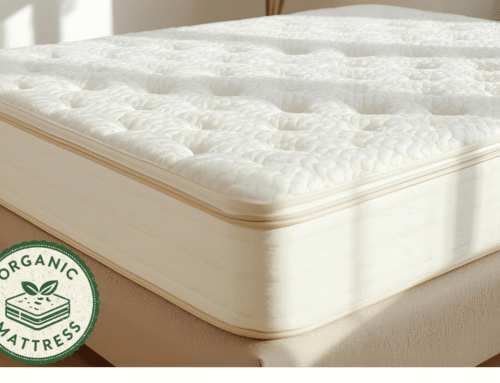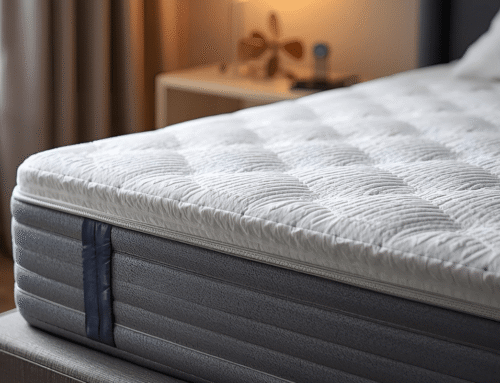Memory foam feels great at first. It’s soft, cushy, and kind of like sinking into a cozy hug. But after a while, certain spots start sagging, especially where someone lies night after night. That dip destroys the balance, and suddenly sleep doesn’t feel as restful anymore. A common fix people try is sliding a sturdy board or piece of plywood under the mattress. Others rotate it every few months to even out the wear. Some even try layering an old yoga mat or firm blanket underneath the sunken area, which adds a bit more lift without spending extra.
So let’s go through the easy things that can help restore some order. Some equipment may already be scattered around the home, and others just require some effort. There is no need to throw the mattress in the meantime. A few adjustments can make things supportive for a little while longer.
But before fixing dips, it also helps to know that memory foam mattresses contour to your body for soft and cushy support. Gel memory foam adds cooling, while thicker mattresses generally last longer. The price reflects quality and durability, and mattresses usually need up to 48 hours to fully expand. These factors affect how dips form and how best to fix them.
Key Takeaways
- Rotating your memory foam mattress every 3–6 months helps distribute wear evenly and prevents dips or sagging over time.
- A firm mattress topper made of latex or high‑density foam can restore support while still keeping the bed from feeling overly stiff.
- Placing a smooth sheet of plywood under the mattress instantly adds firmness by reinforcing the base and reducing sinking.
- Lowering your bedroom temperature to around 60–68 °F (15–20 °C) helps memory foam stay firmer and minimizes softening caused by heat.
- Let a new memory foam mattress air out for 24–48 hours before using it to ensure proper expansion and an even and comfortable feel.
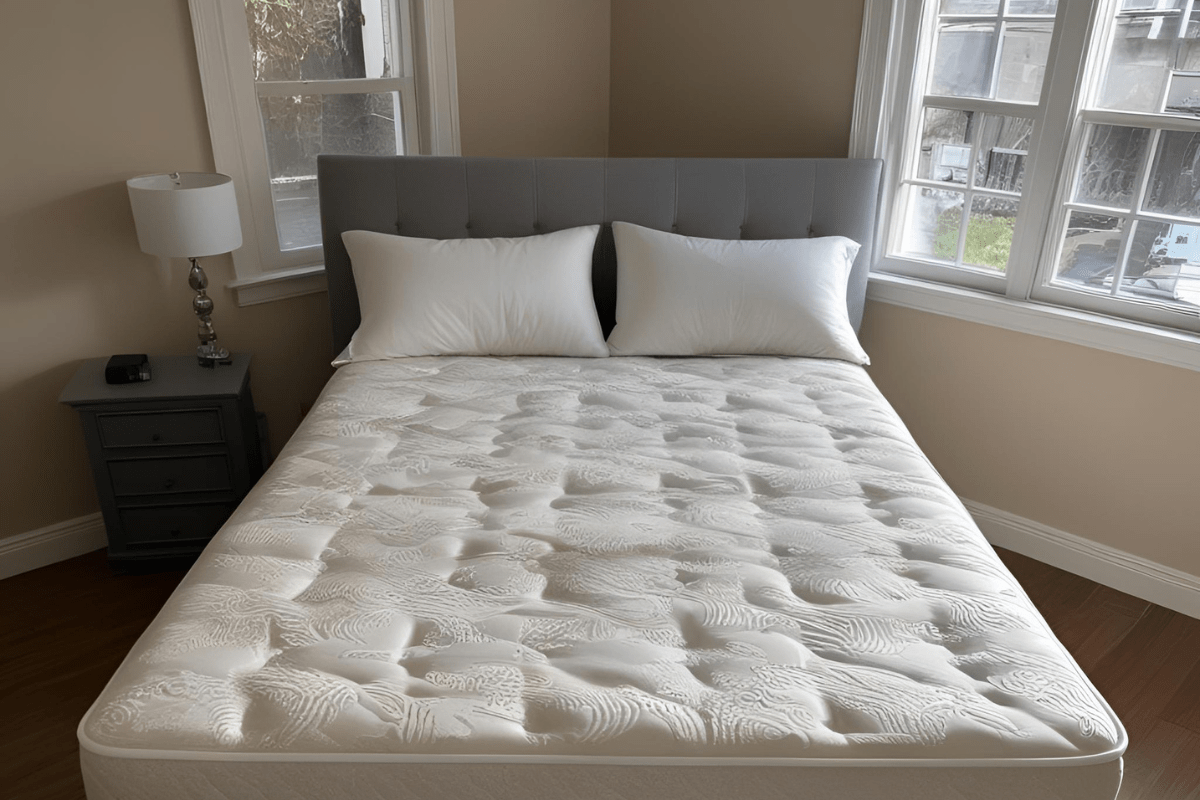
What Causes Dips in Memory Foam Mattresses?
Memory foam reacts to body heat and pressure, which helps it feel soft and contouring. Over time though, that same softness can become a downside. The material starts to lose its shape, especially in spots where someone sleeps night after night. A dip shows up faster when the base underneath isn’t strong enough or if the mattress hasn’t been rotated in a while. Lighter foam density, anything under 4 lbs per cubic foot, also breaks down quicker, which can lead to sagging. These dents aren’t always covered by warranty unless they reach a certain depth.
Even high quality beds eventually wear down, especially with daily use. Foam tends to soften first in high-pressure areas like the hips and shoulders. It’s not about how someone sleeps but how often and how much weight the foam supports over time.
How To Fix A Dip In Memory Foam Mattress At Home
It is common for some people to notice sagging in their mattress and immediately check the bed base. A weak or uneven bed frame can cause dips in mattresses, even if it is a great quality memory foam mattress. Adding a sturdy plywood sheet or bunkie board under the mattress creates a flatter and firmer feel and does not require a total replacement of the set.
Others are adamant that rotating the mattress every couple of months helps to flatten out any pressure points. This does help to avoid only wearing down the foam in one place, but not usually if they flip. In most cases, the memory foam beds have a designated top side, so rotating the mattress will be the safer bet for more areas of foam compression.
A couple of people have also laid the mattress out on the floor temporarily to test whether or not the dip stays without the frame. If it flattens, then the dip is probably not even a problem with the mattress at all. It is a quick way to determine if it is actually a support issue before going out and spending any money on repairs or upgrades.
To fix dips at home, you can make the memory foam mattress firmer by adding mattress toppers or pads that provide extra support. Compressing the mattress can also help restore some of its original shape. When moving or repositioning the mattress, take care to avoid bending or folding it sharply, as this can cause further damage.
Using Mattress Toppers And Pads
A mattress topper can be a helpful short-term solution for a sagging memory foam bed. Foam or latex toppers with enough thickness and density tend to improve how the surface feels by softening pressure points. A topper around 2 to 3 inches thick usually offers decent support without sinking too much. Some people try mattress pads with added cushioning, especially those designed with quilted zones or extra fill in certain areas. These can smooth out uneven spots and provide a bit more comfort during sleep. Still, they don’t offer the same support as a denser topper, so expectations should stay realistic.
While toppers and pads may bring short-term relief, they don’t resolve why the mattress dipped in the first place. Over time, the sag is likely to get worse, even with a pad or topper on top. Anyone dealing with a deep impression in the middle of their mattress might need to think about replacing it soon.
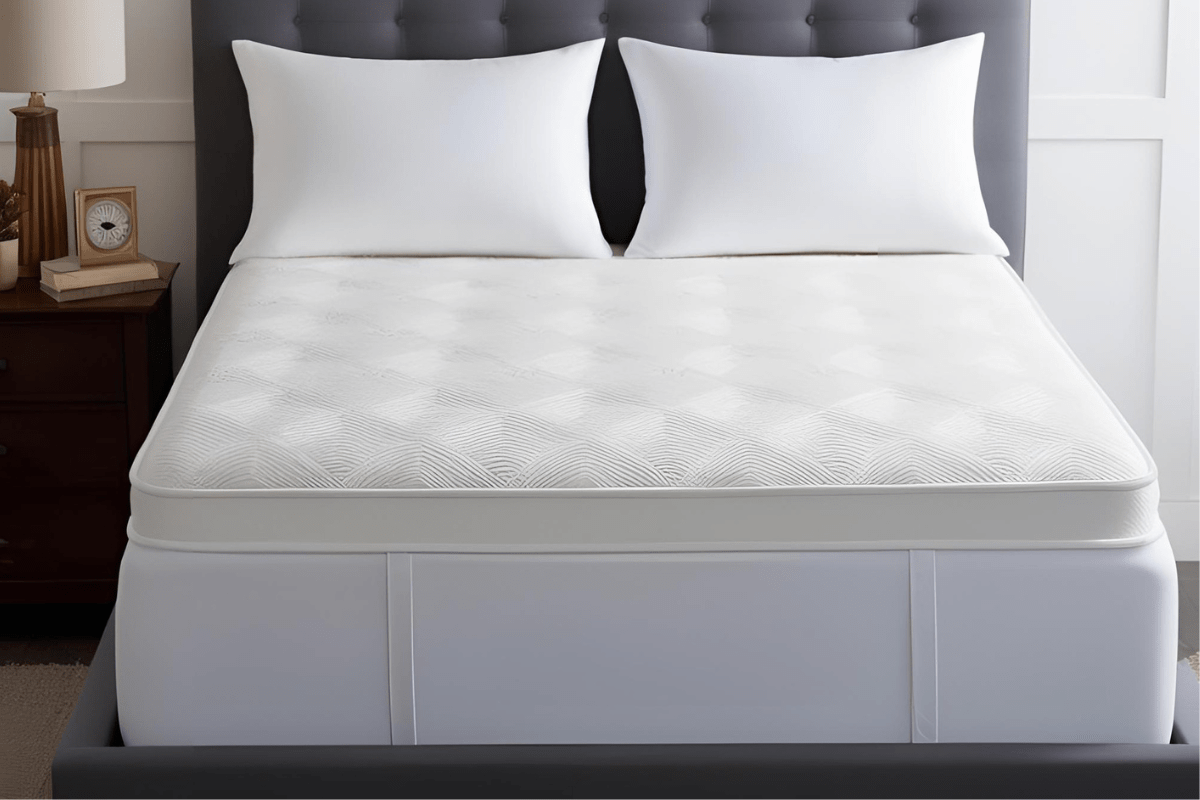
When To Replace Your Mattress
A visible sag in a memory foam bed can be like sleeping in a ditch. Others attempt flipping, rotating, or even putting a topper on it, but nothing actually solves the problem long term. If the bed is more than ten years old, then the likelihood is that the foam has degraded more than usual, particularly if used every day.
An old mattress doesn’t just mess with comfort. It affects the whole sleep cycle. Waking up with a sore back or feeling unrested becomes the norm. People who swapped theirs out after struggling with pain noticed deeper sleep and fewer morning aches.
A sinking mattress may also put stress on the bed frame, shortening its lifespan. Solid support from a newer model maintains the frame and prevents creaking or movement that’s prone to occur with unevenness. For those who have been waking up with aches or flailing the entire night, replacing the mattress provided relief they did not know they needed.
Knowing how often a memory mattress should be replaced is essential to maintaining good sleep health. It’s important to recognize when it’s time to replace your mattress, not just based on age but also on comfort and support. Additionally, when disposing of an old mattress, proper recycling or disposal methods help reduce environmental impact.
Using Plywood Under Your Mattress
Placing plywood under the mattress can feel like an instant solution for sagging or lack of support. Some people say it firms up the sleep surface, especially on older beds or softer box springs. But it’s not always a long-term solution, especially if the mattress itself is worn out.
A smooth sheet at least ¾-inch thick seems to work best since thinner boards can bend or crack over time. Rough edges or splinters can snag fabric or feel uneven. It’s also important that the board fits flush with the frame, anything too small may shift around, and anything too large might cause pressure on the corners.
While some people notice better back support after adding plywood, others end up with more stiffness or discomfort, especially on firmer mattresses. The extra layer cuts airflow, too, which might trap heat and moisture underneath. For foam mattresses, that buildup can affect how the material responds over time.
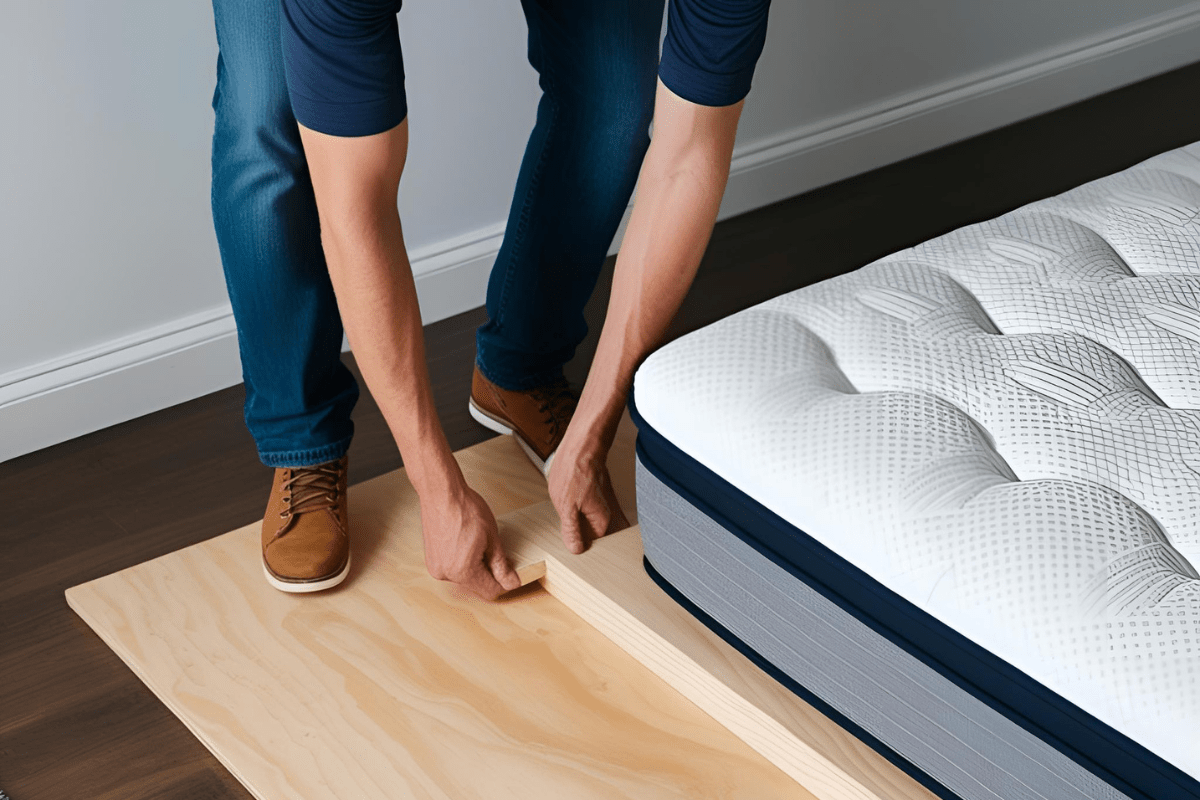
Common Mistakes To Avoid
Some forget to check the bed frame or foundation before blaming the mattress. A weak or uneven base can mess with support and cause early sagging. Even the best mattress won’t stay level if the bottom’s unstable. Mattress dips often show up faster when rotations are skipped. Regular rotation spreads out the pressure points and slows uneven wear. Ignoring this step is one of the easiest ways to shorten a mattress’s lifespan.
Low-density memory foam tends to break down faster under daily use. Anything under 4 lbs per cubic foot usually softens too quickly. Foam with higher density holds up better and keeps the surface feeling supportive longer.
When Is It Time To Replace?
Most mattresses won’t last forever, even the pricier ones. Memory foam tends to hold up better than most, but by the 8- to 12-year mark, it’s common to notice less support and more sagging. No topper or rotation trick really fixes that once the foam breaks down.
People often hang on to their old mattress longer than they should. A dent in the middle or waking up sore more often could be a sign the structure inside is worn out. Memory foam loses its density with time, and no amount of flipping can reverse that.
Some prefer denser memory foam for a reason, as it holds shape longer and feels more solid at night. Mattresses with foam density around 4 pounds per cubic foot or higher tend to last beyond the usual range. Anything less tends to soften fast and slump under pressure.
How To Prevent Dips In The Future
Fixing a dip is just the first step. Keeping it from coming back takes a bit more effort. Rotating the mattress every few months helps even out wear, especially for those who sleep in the same position each night. Some people forget this step, but it actually keeps the surface feeling more balanced for longer. A lot of people overlook their bed frame, but it’s just as important. A mattress without a supportive base tends to sag faster, especially heavier models. Solid platforms or slatted bases with tight spacing give better long-term support than flexible frames.
High-density foam holds up better under pressure and doesn’t give out as quickly. People who let pets on the bed or always sit on the same edge notice uneven spots sooner. Small habits like these wear down certain areas faster, even if the mattress is new.
Memory foam density and quality matter significantly for durability and comfort. Maintaining your mattress by rotating it regularly, cleaning it properly to remove stains and moisture—including getting urine out of memory foam mattress—and drying it thoroughly will help preserve its shape and support. Keeping the mattress cool and storing it correctly when not in use also contribute to preventing dips and prolonging its lifespan.
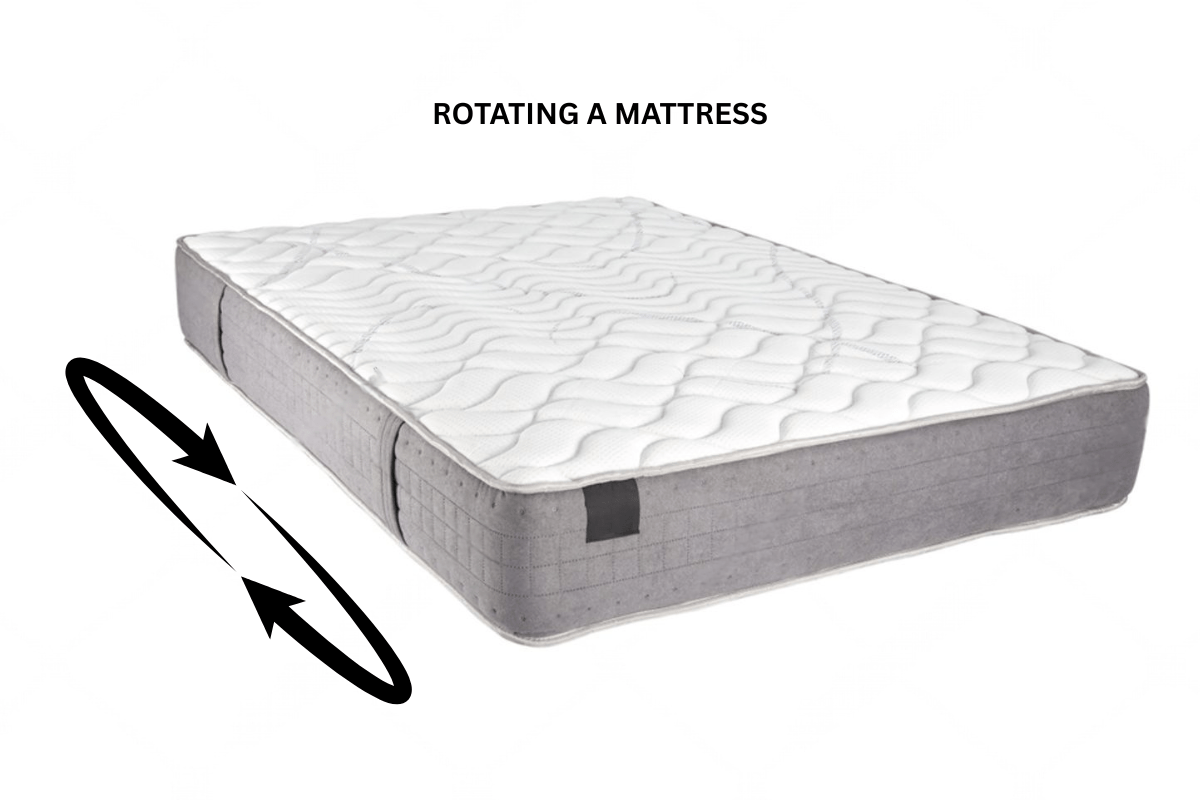
Memory Foam Density And Quality Matter
Memory foam feels different depending on its density. Higher-density foam, usually around 5 lbs per cubic foot, tends to feel more supportive and durable over time. In contrast, lower-density foam can start to soften or develop dips much sooner.
Some users notice that high-density foam keeps its shape better even with daily use. That kind of structure can offer steadier support, especially for those who shift positions often. Lower-density foam might feel plush at first, yet it wears down faster, especially at pressure points.
Not every product lists foam specs clearly, so asking or digging deeper helps. Toppers and mattresses with vague descriptions often use low-density materials. A bit of research on specs and real reviews can help avoid replacements too soon.
Final Thoughts
Although it can cause sleep disturbances, a sagging memory foam mattress does not necessarily mean that comfort is coming to an end. Restoring necessary support can frequently be achieved by strengthening the bed frame, adding a mattress topper, or positioning a sturdy board underneath the mattress. The mattress’s useful life can be prolonged with these easy fixes rather than a complete replacement.
To stop dips from forming, proper maintenance and the correct foundation are crucial. Over time, the mattress’s shape can be preserved by rotating it frequently and making sure the bed frame is sturdy. A longer mattress life is also a result of avoiding moisture and excessive wear.
The mattress has typically reached its limit when these attempts to increase comfort are no longer successful. Long-term support is improved by purchasing a high-quality mattress made to last. A high quality mattress can provide consistent comfort and reduce the chances of early sagging.

